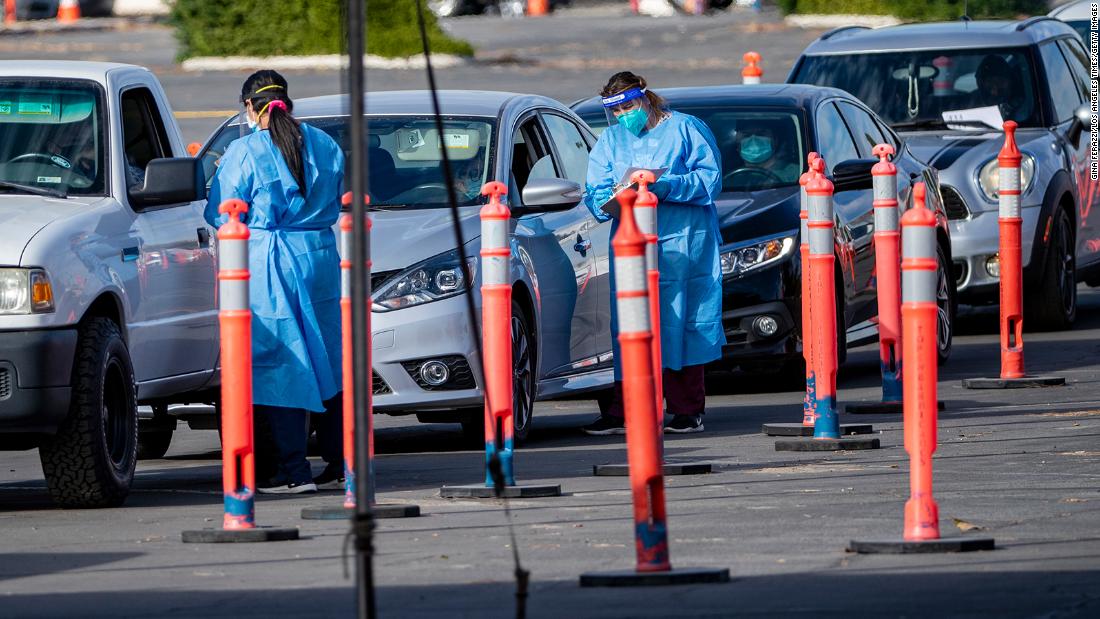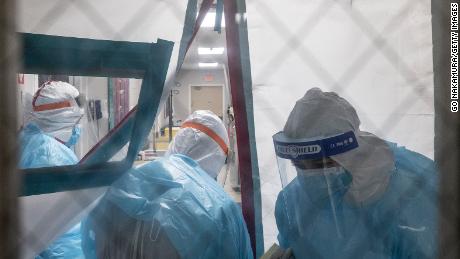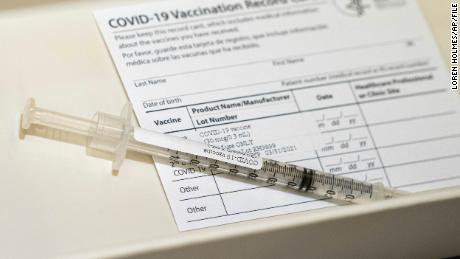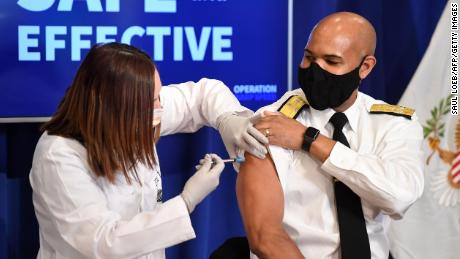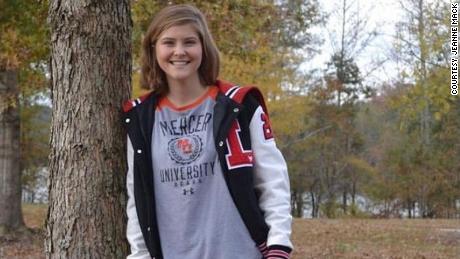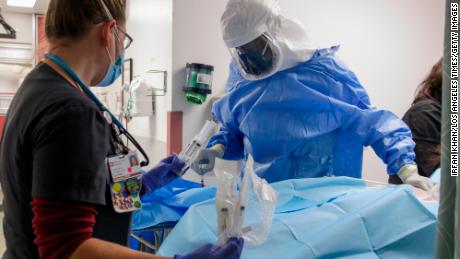As FDA authorizes a second Covid-19 vaccine, US reports highest number of daily cases
The US Food and Drug Administration on Friday authorized Moderna’s vaccine candidate for emergency use in people 18 and older. Before those vaccinations can begin, a US Centers for Disease Control and Prevention vaccine advisory panel — scheduled to meet Saturday — must vote to recommend the vaccine, and the agency must accept that recommendation.
The second green light comes as hundreds of Americans across the country have already received their first dose of the Pfizer/BioNTech vaccine, which was authorized by the FDA last week.
“This is the beginning of the end,” Adams told CNN Friday night. “Make no mistake about it, it’s going to be a hard couple of weeks. We’ve still got work to do to get over this surge, but I want people to be encouraged.”
He chose to get the vaccine on TV because he wanted the American public to “understand I’ve looked at the data, I’ve worked with the companies and I felt safe getting the vaccine,” he said.
“Really, this is a life and death message for Black people about the coronavirus,” Dr. Valerie Montgomery Rice said.
A raging pandemic that’s far from over
Despite the promising news, it’s not quite the end. In many parts of the US, Covid-19 is still raging across communities.
- More than 18,000 Americans died of Covid-19 in the past week. The University of Washington’s Institute for Health Metrics and Evaluation projects another more than 237,000 Americans will die of Covid-19 over the next three months.
- For the 13th day in a row, the country beat its hospitalization record. There are now more than 114,700 Covid-19 patients in US hospitals, according to the COVID Tracking Project.
- For the past week, the US reported an average of more than 219,000 new Covid-19 infections every day. On Friday, the country broke a record, reporting more than 249,700 new infections.
- Three Alaska health care workers had allergic reactions after receiving a dose of the Pfizer and BioNTech vaccine this week. The FDA has said there is a “remote chance” the vaccine could cause a severe allergic reaction. Because so many people are taking the vaccine at once, the public may perceive these severe reactions as being far more common than they actually are. The FDA said Saturday it would alert the public if any changes to its emergency use authorization were necessary.
Johns Hopkins launches vaccine tracker
Gen. Gustave Perna, chief operating officer for the federal government’s vaccine initiative Operation Warp Speed, said distribution of the Moderna vaccine has “already begun.”
“Boxes are being packed and loaded today,” he said in a news conference Saturday. “Trucks will begin rolling out tomorrow, from FedEx and UPS, delivering vaccines and kits to the American people across the United States.”
There were 7.9 million doses of vaccines allocated this week, Perna said, and the US is “on track” to allocate 20 million doses by the end of the year.
The Johns Hopkins Coronavirus Resource Center has now launched a new vaccine tracking tool that offers “daily updates and nationwide perspective on the progress of the COVID-19 vaccination rollout” in the US.
The tool currently captures data from 10 states that have begun publicly reporting the number of vaccines administered, including Connecticut, Idaho, Michigan, Nebraska, Ohio, South Dakota, Texas, Utah and West Virginia.
“I want to warn everyone that there’s going to be some hiccups because this is all very new,” Beth Blauer, executive director of the Johns Hopkins University Centers for Civic Impact, said. “The data is getting out there faster than we’ve ever seen data from a government being produced, and so we have to give a little grace to those states that are doing that reporting.”
Massachusetts health officials said it wasn’t clear why the dose numbers have changed.
“The Department of Public Health now expects to receive … a little bit more than 145,000 doses of the Pfizer vaccine by the end of December — a number that has been reduced from 180,000. That’s about a 20% decline,” Secretary of Health and Human Services Marylou Sudders said at a news conference.
“At this time, it’s not clear to us why the shipment amounts have been adjusted,” she said.
Massachusetts Gov. Charlie Baker said officials were “certainly frustrated that we won’t be receiving the amount that we expected in the first wave and are working to get clarity on what this means.”
In Saturday’s news conference, Perna attributed the lower allocations to a “planning error,” and said he was taking “personal responsibility for the miscommunication.”
“To the governors, to the governors’ staff, please accept my personal apology if this was disruptive in your decision making and in your conversations with the people of your great state,” Perna said. “I will work hard to correct it.”
An ‘error’ in distribution excludes health care workers
Only seven out of more than 1,300 medical residents and fellows were slated to receive the vaccine and priority was given to faculty and attending physicians who work from home under Stanford Health’s distribution plan, the affiliate reported.
“Our intent was to develop an ethical and equitable process for distribution of the vaccine,” Stanford Health Care said in a statement obtained by the news station.
“We apologize to our entire community, including our residents, fellows, and other front line care providers, who have performed heroically during our pandemic response. We are immediately revising our plan to better sequence the distribution of the vaccine,” the statement said.
CNN has contacted Stanford Health Care for comment.
Video taken by the affiliate showed people in scrubs and PPE demonstrating Friday, and chanting, “First in the room, back of the line.”
“We got it wrong. Let’s get you vaccinated,” Entwistle told the crowd, the San Francisco Chronicle reported. “We’ll correct it.”
Different states, different measures
As state and federal officials gear up for more vaccine shipments, different parts of the country are reporting different Covid-19 trends.
In New York, Gov. Andrew Cuomo said hospitals are at “crisis management” mode and capacity has been added at facilities across the state.
“I believe hospitals are going to be able to manage this,” he said. “We learned a lot in the spring.”
“L.A. County is moving toward becoming the epicenter of the pandemic,” Dr. Brad Spellberg, chief medical officer at LAC + USC Medical Center, warned Friday.
“We’re getting crushed,” Spellberg added about the county’s hospitals. “I’m not going to sugarcoat this. We are getting crushed.”
In-person classes can resume at high schools and indoor venues such as movie theaters can reopen with capacity limits and other safety precautions, the governor said. Outdoor group fitness activities and outdoor non-contact sports can also resume.
CNN’s Ben Tinker, Amanda Watts, Hollie Silverman, Deidre McPhillips, Jen Christensen and Arman Azad contributed to this report.
![]()


